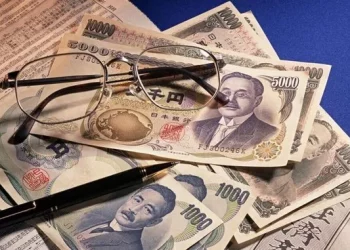The foreign exchange market, also known as Forex, is the world’s largest and most liquid financial market. With trillions of dollars traded daily, it allows individuals, businesses, and governments to exchange one currency for another. Currency conversion, which involves exchanging one currency for another at a specific rate, is an essential component of international trade, investment, and global finance. One of the most common conversions that traders, businesses, and travelers encounter is that of converting U.S. dollars (USD) into Indian rupees (INR).
In this article, we will explore the concept of converting 10,000 U.S. dollars into Indian rupees, delve into the factors influencing currency exchange rates, and discuss trading strategies for maximizing profits when participating in the foreign exchange market.
What Is the Value of 10,000 U.S. Dollars in Rupees?
The value of 10,000 U.S. dollars in Indian rupees fluctuates daily due to market conditions, economic events, and geopolitical factors. The exchange rate is the price at which one currency can be exchanged for another. For example, if the exchange rate is 1 USD = 80 INR, then 10,000 USD would be equivalent to 800,000 INR. This rate changes as the Forex market operates 24 hours a day, and it is subject to a wide range of influences, such as inflation rates, interest rates, political stability, and international trade dynamics.
For the sake of this example, let’s assume the exchange rate between USD and INR is 1 USD = 80 INR. Therefore, converting 10,000 U.S. dollars would give you 800,000 Indian rupees.
Key Factors Influencing Exchange Rates
Interest Rates
Interest rates set by central banks play a significant role in the value of a currency. When a country’s central bank increases interest rates, it typically leads to an appreciation of that country’s currency because higher interest rates attract foreign investment. Conversely, lower interest rates can lead to a depreciation of the currency as capital flows out of the country.
For instance, if the Reserve Bank of India (RBI) raises interest rates, the Indian rupee may appreciate against the U.S. dollar, which means that 10,000 U.S. dollars will convert to fewer rupees. Conversely, if the Federal Reserve (Fed) in the U.S. raises its interest rates, the U.S. dollar may strengthen against the rupee.
Inflation Rates
The rate of inflation in a country also affects its currency value. Countries with higher inflation typically experience a depreciation in their currency because inflation erodes the purchasing power of money. If the inflation rate in India is higher than in the U.S., the Indian rupee is likely to weaken against the U.S. dollar. This would mean that 10,000 U.S. dollars would convert to more Indian rupees.
Economic Growth and GDP
A country’s economic performance, often measured by its Gross Domestic Product (GDP), also influences the value of its currency. Strong economic growth typically leads to a stronger currency because it attracts investment and boosts confidence in the country’s economy. In contrast, a weak economy with slow growth can lead to a decline in the currency’s value.
If India’s economy is growing at a faster rate than the U.S. economy, the Indian rupee may appreciate, meaning the value of 10,000 U.S. dollars in rupees would be lower.
Political Stability and Global Events
Political instability or uncertainty can negatively affect a country’s currency. For example, elections, trade wars, or geopolitical tensions can lead to volatility in the Forex market. Traders often react to such events by adjusting their positions, which can cause significant fluctuations in exchange rates.
In the case of India, any political unrest or global crises, such as pandemics or wars, could cause the rupee to weaken against the U.S. dollar, thereby increasing the rupee value of 10,000 U.S. dollars.
Trade Balances
A country’s trade balance, which is the difference between its exports and imports, affects its currency value. A country with a trade surplus (more exports than imports) generally experiences a stronger currency because foreign buyers need to purchase the country’s currency to pay for goods and services. Conversely, a trade deficit can lead to a weaker currency.
India has historically had a trade deficit, meaning that it imports more than it exports. This can put downward pressure on the value of the rupee, potentially leading to higher rupee values for 10,000 U.S. dollars.
How to Convert 10,000 U.S. Dollars to Rupees?
To convert 10,000 U.S. dollars to rupees, you need to know the current exchange rate between the U.S. dollar (USD) and the Indian rupee (INR). Exchange rates can be obtained from various sources, such as Forex brokers, banks, or financial news websites. However, it’s important to note that exchange rates provided by different financial institutions may differ slightly due to transaction costs and fees.
To illustrate, let’s assume the current exchange rate is 1 USD = 80 INR. The calculation would be:
10,000 USD x 80 INR = 800,000 INR
Therefore, 10,000 U.S. dollars would be equivalent to 800,000 Indian rupees at this exchange rate.
However, if the exchange rate shifts, as it often does, the amount of rupees you receive for the same 10,000 U.S. dollars will change. For instance, if the exchange rate changes to 1 USD = 85 INR, then:
10,000 USD x 85 INR = 850,000 INR
This demonstrates the importance of staying informed about exchange rate trends when converting currencies, as fluctuations can have significant financial implications.
Forex Trading Strategies: Maximizing Profits from USD/INR Fluctuations
For Forex traders, understanding exchange rate movements and knowing when to buy or sell currencies can result in significant profits. There are several trading strategies that traders use to take advantage of fluctuations in the USD/INR exchange rate.
Trend Following Strategy
Trend following is a popular strategy in the Forex market. Traders using this approach seek to identify and follow the prevailing trend in the market. For example, if the USD/INR exchange rate has been steadily rising for several weeks, a trader might choose to buy U.S. dollars in anticipation of further appreciation of the dollar.
Conversely, if the exchange rate is falling, the trader may decide to sell their U.S. dollars, expecting the rupee to appreciate further. This strategy relies on technical analysis, which involves studying past price movements and identifying trends to predict future price action.
Range Trading Strategy
Range trading is another common strategy used by Forex traders. This strategy involves identifying support and resistance levels, which are price levels at which a currency pair tends to reverse direction. When the USD/INR exchange rate is trading within a well-defined range, a trader might buy at the support level (when the price is low) and sell at the resistance level (when the price is high).
Range traders aim to capitalize on price oscillations within a predictable range, making this strategy more suitable in stable market conditions where there are no strong trends.
Carry Trade Strategy
The carry trade strategy involves borrowing funds in a currency with a low interest rate and investing them in a currency with a higher interest rate. Forex traders use this strategy to profit from the difference in interest rates between two currencies. For example, if the interest rate in the U.S. is lower than in India, a trader might borrow U.S. dollars (low interest) and invest in Indian rupees (higher interest) to earn the interest rate differential.
Fundamental Analysis and News Trading
Fundamental analysis focuses on the economic, political, and social factors that can influence currency prices. Traders who use this strategy stay informed about global economic events, such as central bank meetings, economic data releases, and geopolitical developments, that could impact the exchange rate between the U.S. dollar and the Indian rupee.
News trading involves making trades based on breaking news and economic reports that have the potential to move the Forex market. For instance, if the U.S. Federal Reserve announces an interest rate hike, it could cause the U.S. dollar to appreciate, leading to a change in the USD/INR exchange rate.
Scalping Strategy
Scalping is a short-term trading strategy that aims to profit from small price movements over very short timeframes. Scalpers make multiple trades throughout the day, attempting to catch brief price swings in the Forex market. This strategy requires a high level of skill, quick decision-making, and a deep understanding of market dynamics.
Traders who use the scalping strategy may attempt to capitalize on small fluctuations in the USD/INR exchange rate, executing several trades within minutes or hours.
Risks in Forex Trading and How to Manage Them
While Forex trading can be profitable, it also comes with risks. The high volatility of currency markets means that exchange rates can move rapidly and unpredictably. Traders may face the risk of substantial losses if they are not careful in managing their positions.
Some of the key risks in Forex trading include:
- Market Risk: The risk that exchange rates move against a trader’s position, resulting in losses.
- Leverage Risk: Using leverage to trade can amplify both profits and losses. Traders should exercise caution when using leverage.
- Liquidity Risk: The risk that a trader cannot execute a trade at the desired price due to low liquidity in the market.
- Geopolitical Risk: Unexpected events, such as political instability or natural disasters, can have an impact on exchange rates.
To manage these risks, traders can use strategies such as setting stop-loss orders, diversifying their portfolios, and staying informed about market conditions.
Conclusion
Converting 10,000 U.S. dollars to Indian rupees is a straightforward process, but the value of the rupees you receive is subject to constant fluctuations. Exchange rates are influenced by numerous factors, including interest rates, inflation, economic growth, political stability, and trade balances. Forex traders can leverage this volatility to their advantage by employing various trading strategies, such as trend following, range trading, carry trades, and scalping. However, it’s important to understand the risks involved and to manage them appropriately to maximize potential profits.
Whether you are a business owner engaging in international trade, an investor looking to diversify your portfolio, or a Forex trader seeking to profit from currency fluctuations, understanding the dynamics of USD to INR conversion and Forex trading is essential for making informed financial decisions in the global marketplace.
Related Topics:



























